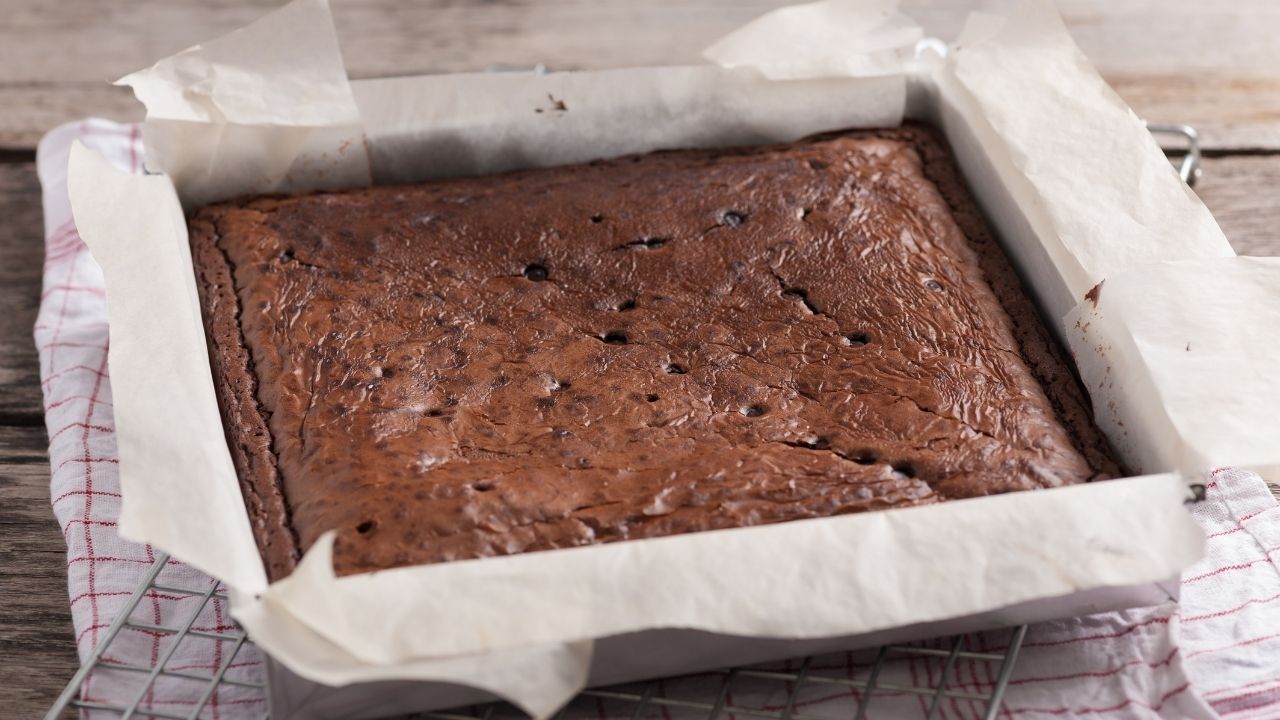For all of my chocolate brownie lovers out there, we know the secret to a perfect brownie is the rich, delicious gooey center that leaves us tempted to eat the whole pan – but not all brownies are created equally. It is not always easy to master that captivatingly delicious fudgy or gooey center, especially when making a brand-new recipe.
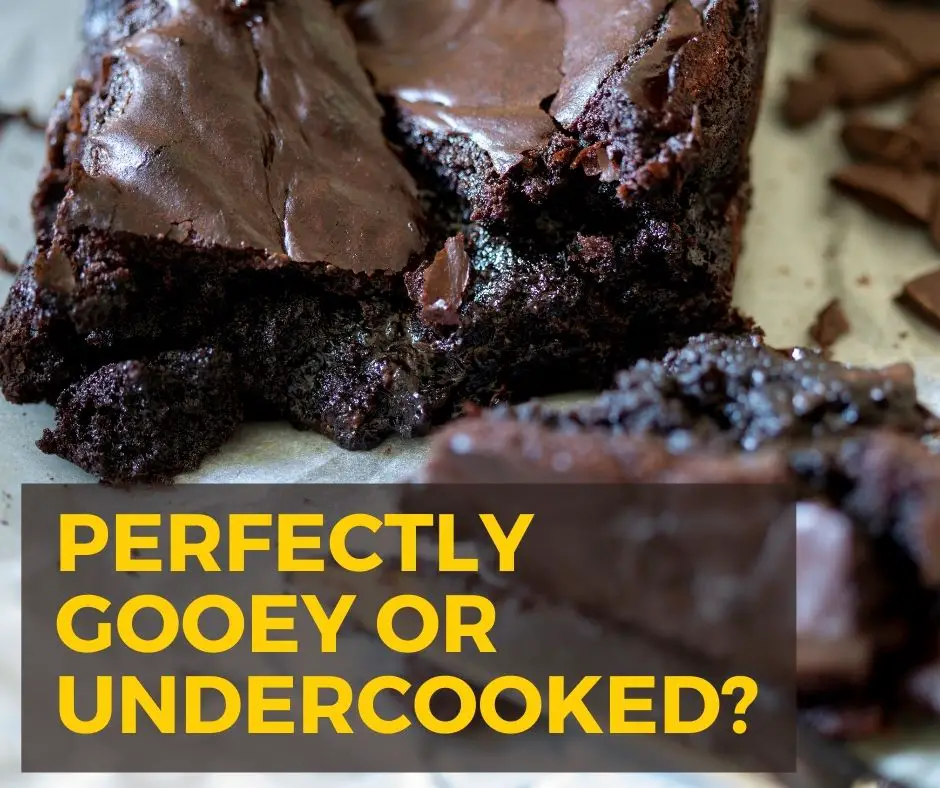
The problem is that, unlike a regular cake, with brownies, it is more difficult to determine whether it is perfectly cooked or not and whether that gooey center is delicious chocolatey goodness or actually just raw, undercooked batter.
Below I will give you some tips and tricks to make sure your brownies come out perfectly cooked every time. The mission is to ensure that you are not eating a raw battery and that every brownie baked is made to its gooey perfection.
How To Tell When Brownies Are Done?
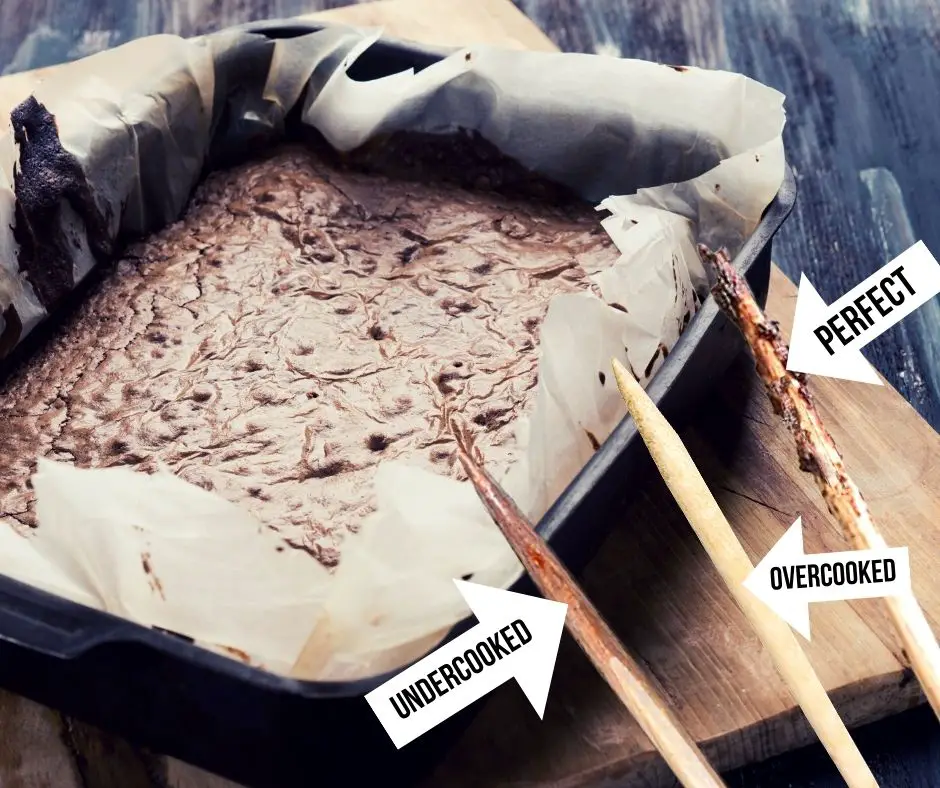
The toothpick trick is a classic way to determine if your brownies need some more time to bake.
Once the top of the brownie looks firm and baked, and the edges start to pull away, take a clean toothpick and stick it into the middle of the brownie in a couple of different places. When there is runny, wet batter on the stick, it is undercooked and needs more baking time.
If we pull the toothpick out and it is completely clean, nothing left on the toothpick, then it’s overcooked, and we have lost the gooey texture we are wanting.
We want only a slight residue, a few moist, chocolaty crumbs of brownie batter to reside on the toothpick. No visible raw batter or completely clean stick either, just moist-looking brownie crumbs. This is when you know that your brownies are baked enough and can be removed from the oven.
How Do We Get The Perfect Brownie Texture?

We first need to begin with: what texture should your brownies be?
There is a lot of debate on the perfect brownie consistency, and a lot of it is also down to personal preference. Some people like theirs with a well-baked cake-like texture, while others like chewier, fudgy center to almost melted chocolaty and super gooey in the middle.
But for me, and I believe that most brownie lovers would agree, the perfect brownie texture, when it is fresh from the oven, has a rich chocolate flavor, a slightly crispy top, and a moist chewy to gooey texture in the center.
When it comes to the ideal brownie texture, ingredients are everything. The quantity of each ingredient you put in your brownie recipe can change absolutely everything.
To ensure that your brownie is soft and gooey or more dense and chewy, you must understand the flour-to-fat balance. If you have too much flour, your brownies will come out cake-like. The more butter you add, the more gooey and fudge-like the consistency will be, and this is the result we want.
If you are going off a pre-written recipe, then keep an eye out at how much butter or another form of fat is in the ingredients list; the more, the better.
For a more chewy texture – add some brown sugar to the recipe or substitute half or all of the white sugar for brown sugar.
Should You Use Chocolate, Cocoa, Or Cacao Powder In Your Brownies?
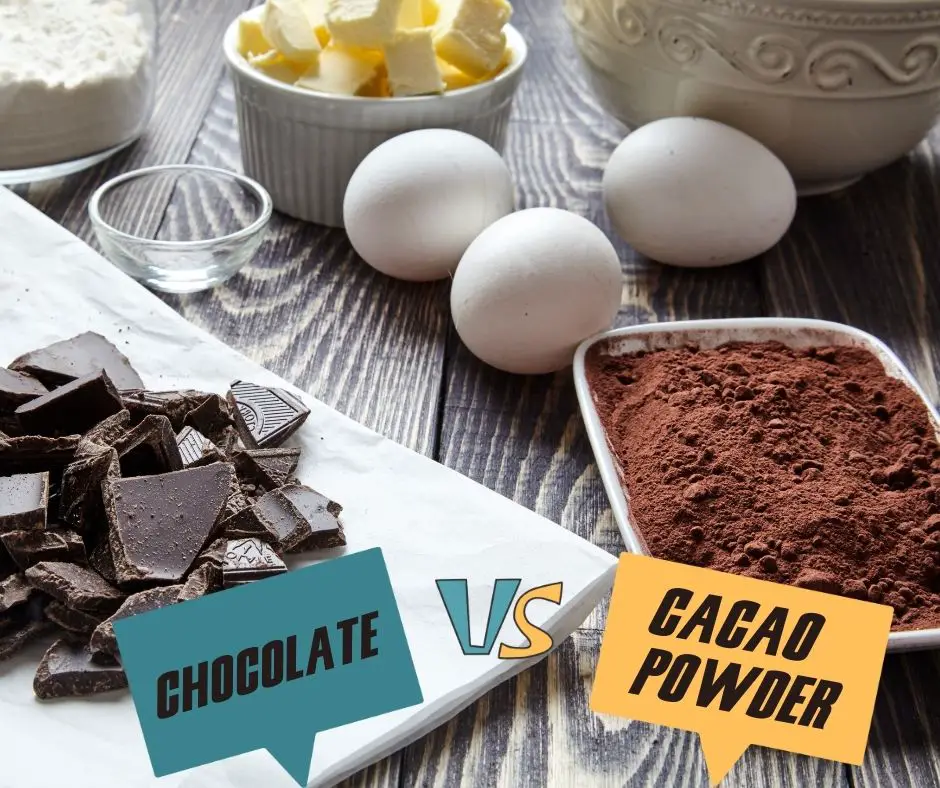
When it comes to chocolate, there is a debate among brownie connoisseurs over whether it is better to use actual chocolate or cacao powder in your recipe. While anything that involves chocolate is amazing, you want to bake your brownies with cacao powder instead.
You can also substitute cacao for cocoa powder, but you will want to use a bit less of it because it tastes more bitter. Cacao powder is also more absorptive, so it is recommended to slightly increase all liquid ingredients in your recipe.
The difference between cacao and cocoa powder lies in the beans from which they are made. Cocoa powder is made from roasted cacao beans, while raw cacao is made from unroasted beans.
Chocolate is delicious, but often it does not seem to give us that deliciously gooey consistency we are looking for in a brownie. Using cacao powder to bring in our chocolate flavor also means using more butter in our recipe.
Remember, the flour-to-fat ratio is a big part of how your brownies will turn out, so the more butter used, the more melt-in-your-mouth the brownies will become.
Whereas if you were to use an actual chocolate bar, your brownies would be dense and probably not as moist and gooey as you’d like. But if you do want to use chocolate or a combination of the two, then go with dark chocolate, with anything from 50 – 90% of cocoa.
What Kind Of Pan Is Best For Baking Brownies?
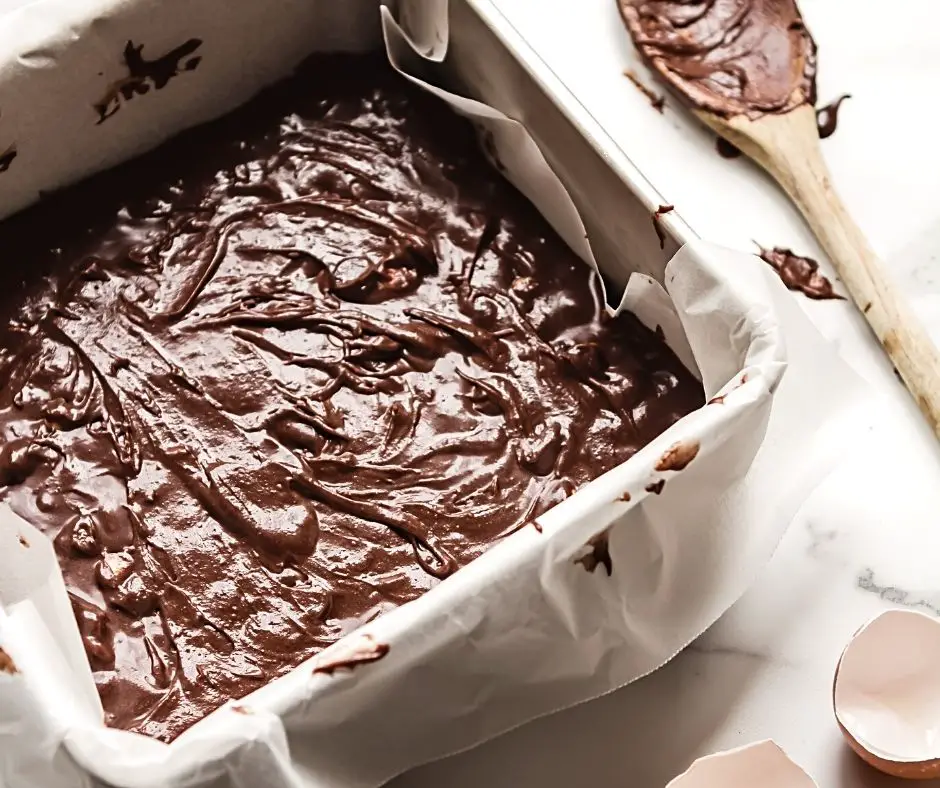
As important as the ingredients are, you must also consider the size of your pan. The larger your pan, the more your brownie batter will spread out during the baking process, and the result will be a very thin, too-dry brownie.
An 8 x 8 size pan is highly recommended as it creates a thicker brownie and allows the chocolate to finesse its way into becoming the perfect, thick, and gooey brownie in the center. A round-shaped springform pan or rectangular 9 x 13-inch cake pans are also good options.
When it comes to bakeware materials, aluminum and glass bakeware lined with parchment paper are the best for baking brownies. These materials distribute and retain heat evenly across their surfaces, ideal for achieving uniformly baked brownies.
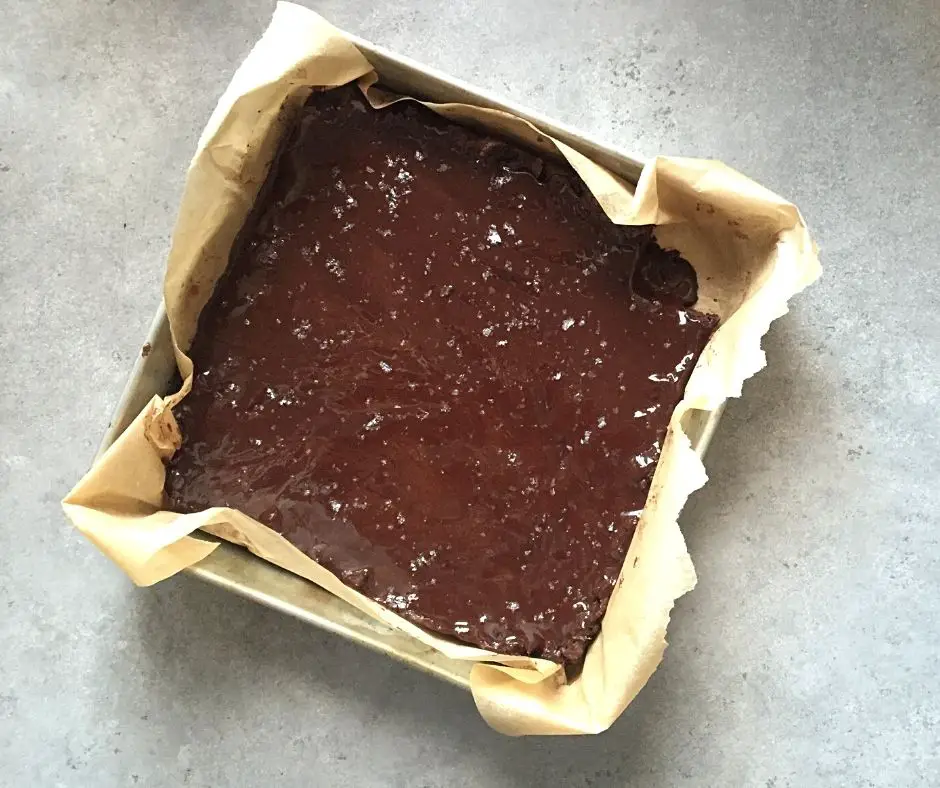
Parchment paper is great for stopping brownies from sticking to the pan. In addition, no one has the time to chisel their brownies out of the pan, so lining your baking pan with parchment paper will make the finished product an easy transition. This will also make sure that your brownie edges come out looking picture-perfect and save you from scrubbing the pan later.
How Long Do Brownies Take To Cook?
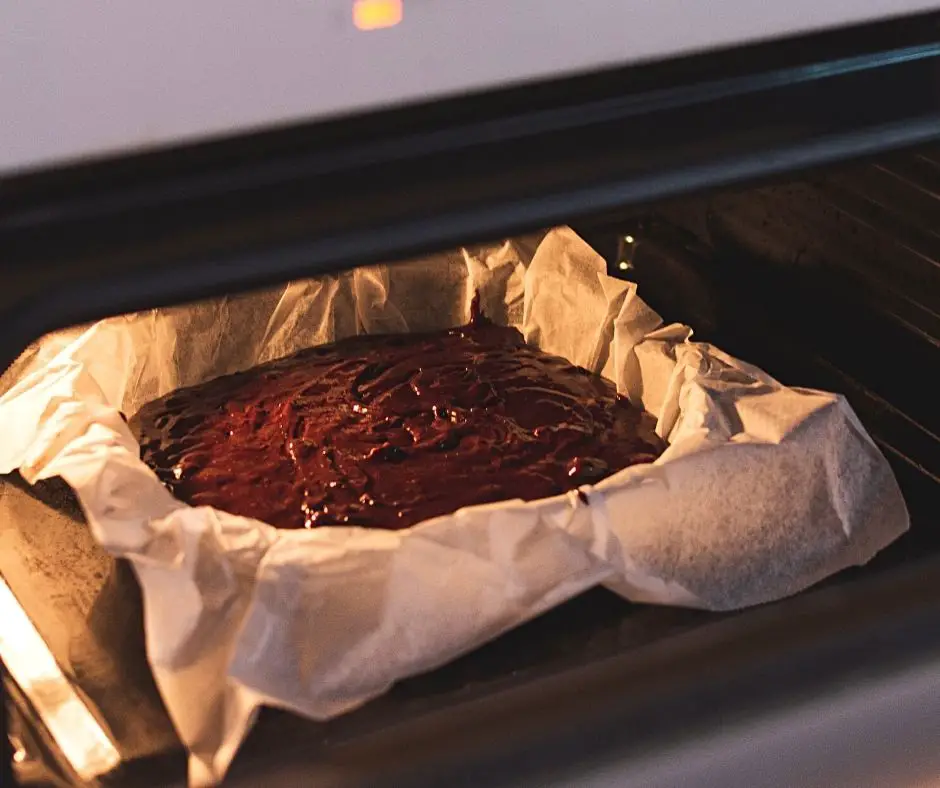
Temperature and time is also a massive factor for achieving that soft and gooey texture. For most recipes, 350ºF (176ºC) is the perfect brownie cooking temperature. Anything higher than that has a greater likelihood of burning the outside of your brownies and taking away from that consistently we are aiming for.
Also, make sure your oven is preheated before putting your brownie in.
Baking time can range anywhere from 35-45 minutes. When aiming for a more soft and gooey center, then after the 35-minute mark, you should start checking your brownie for readiness. Periodically check on your brownies every 5 minutes until they achieve the desired texture.
If you see the top start to crack, that means the brownie is cooked all the way through and no longer has the sticky, gooey chocolate texture. So, you want to make sure you remove the pan from the oven before that happens.
How Long Should Brownies Cool Before Cutting?
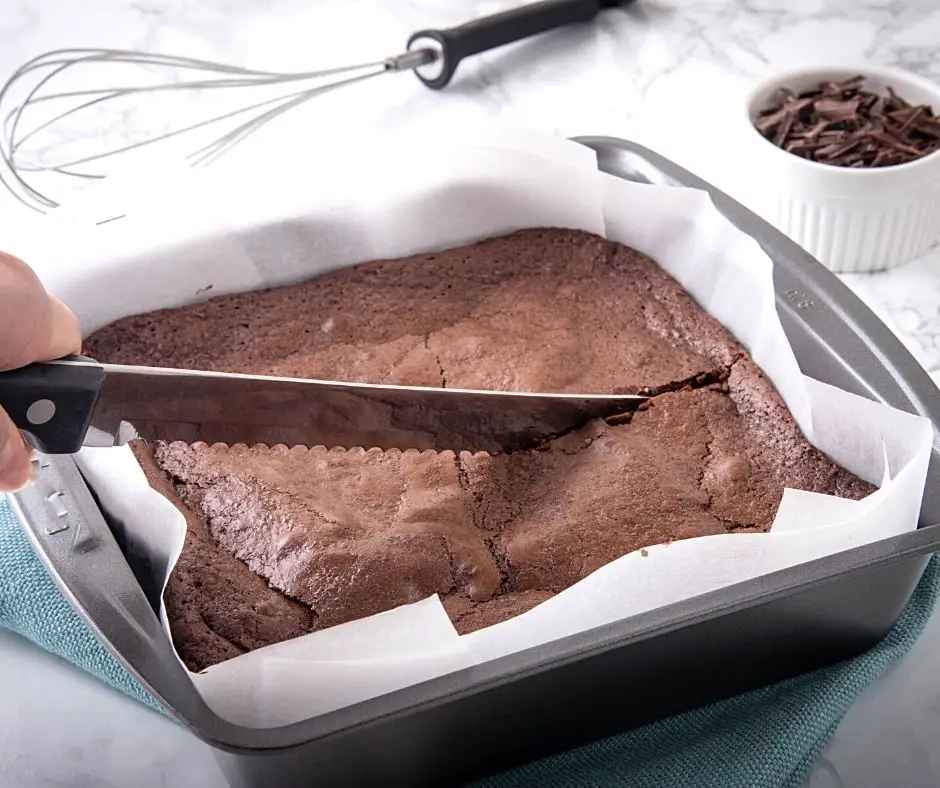
When cutting brownies, it is important to give them adequate rest time. For a clean, presentable, nonsticky slice, let the brownie cool for 20-30 minutes before slicing into it.
The cooling process makes cutting brownies much more manageable because when they are still hot, the chocolaty center may be a bit too gooey, and the pieces tend to stick together and be more sticky and difficult to break apart.
However, if the presentation is not important, then you can dig in pretty much instantly when it comes out of the oven; just make sure you don’t burn yourself with the hot, melty, chocolaty center.
Do Brownies Harden As They Cool Down?
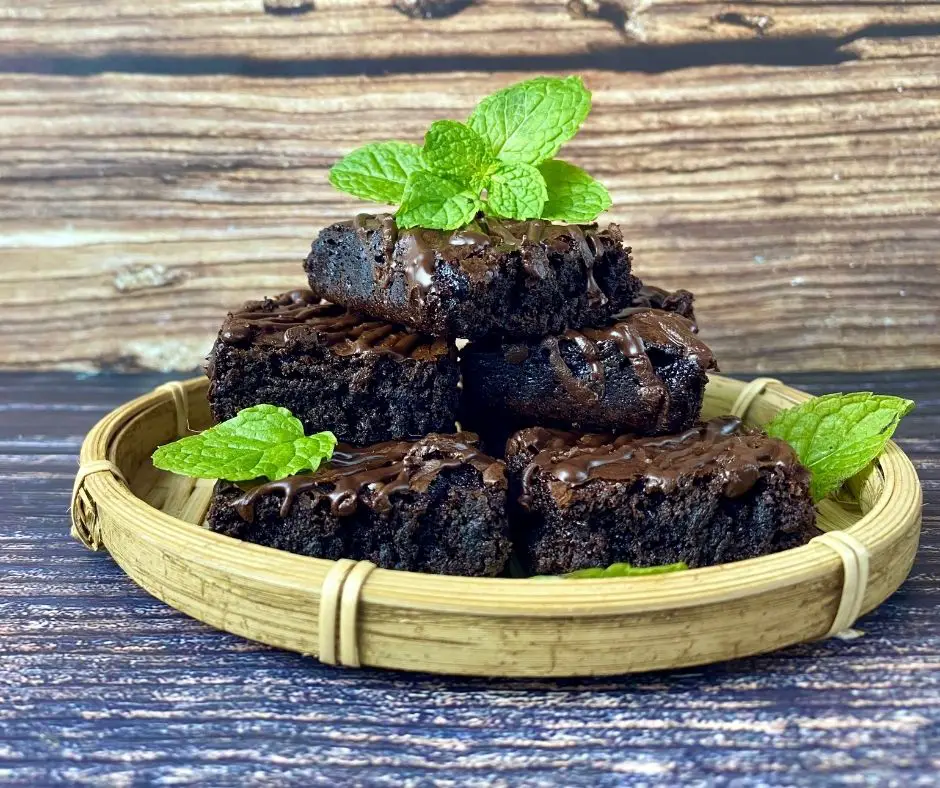
Brownies will set the longer you let them cool down, and when left uncovered, they would harden even more. So, some people recommend deliberately undercooking the brownie to retain the moist texture once it is completely cooled.
If you do end up leaving your brownie pan out on the kitchen counter uncovered, it’s best not to leave it out for more than four hours.
The best way to keep your brownies as safe and moist on the inside as possible is to store them in an air-tight container or tightly wrap them in plastic wrap and put them on the fridge.
Can I Re-Bake Undercooked Brownies?
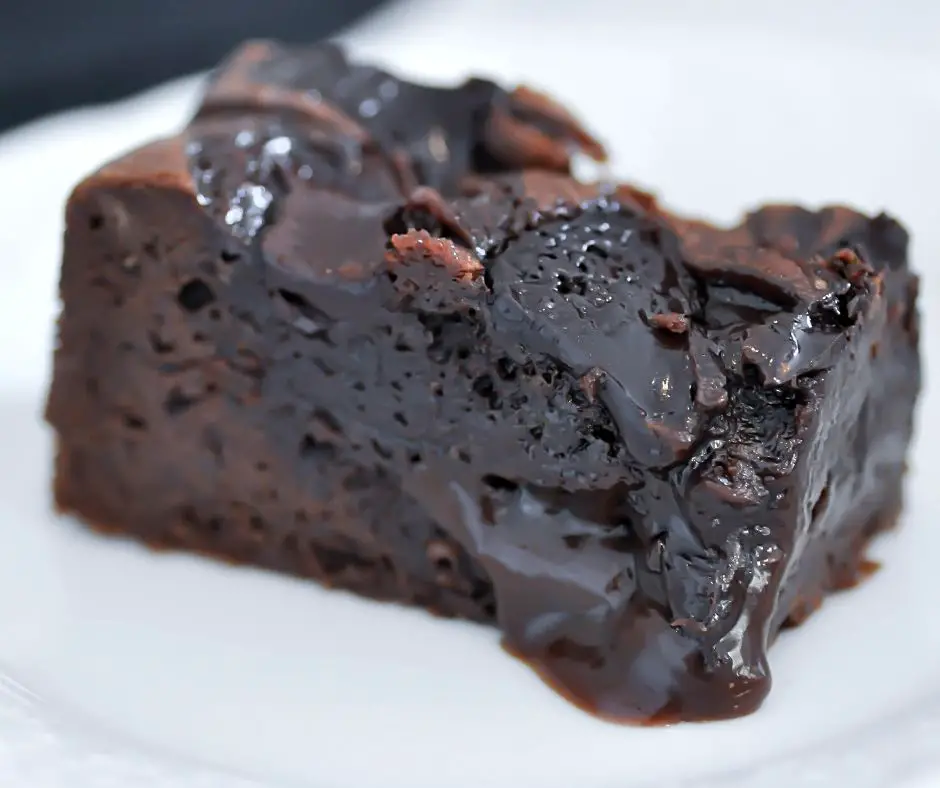
Yes, you can re-bake undercooked brownies. Just put the pan back in the oven and keep baking in five-minute intervals until you achieve the desired texture.
Now, if it’s been over an hour after taking them out of the oven, then one way to salvage our brownies is to nuke them in the microwave for about 30 seconds – 1 minute. This is not a method for the whole pan of brownies, but it is very efficient for our single squares.
Are Undercooked Brownies Safe To Eat?
Brownies typically consist of sugar, chocolate, cacao powder, butter, eggs, vanilla extract, salt, baking powder, all-purpose flour, and sometimes walnuts. If all the ingredients were safe to eat before baking, they would also be safe to eat once baked, even if not thoroughly.
However, eating undercooked brownies comes with a couple of warnings. If you are using unpasteurized eggs in your brownies, there is a higher chance of salmonella getting food poisoning from that, so be aware of which eggs you are using.
If your eggs are pasteurized, which most supermarket eggs usually are, you are in the clear! Go ahead and lick that brownie batter spoon without fear but be mindful of how much you eat so you don’t get a stomach ache from the raw flour.
Read Also: Why is Your Banana Bread Gummy or Dense (Common Problems and Solution).
In Conclusion
Here are some easy ways to know if brownies are baked perfectly. They’re not done yet if they’re still wet on the top or edges. If they’re cracking on the top, then they are probably overbaked and too try.
The easiest way to determine if they’re done is by using a toothpick and inserting it into the center of the pan. Once the brownie looks baked on the surface, take the toothpick out of the pan once inserted, and if there’s a bit of gooey chocolate on it, then it is done, and you can remove it from the oven.
